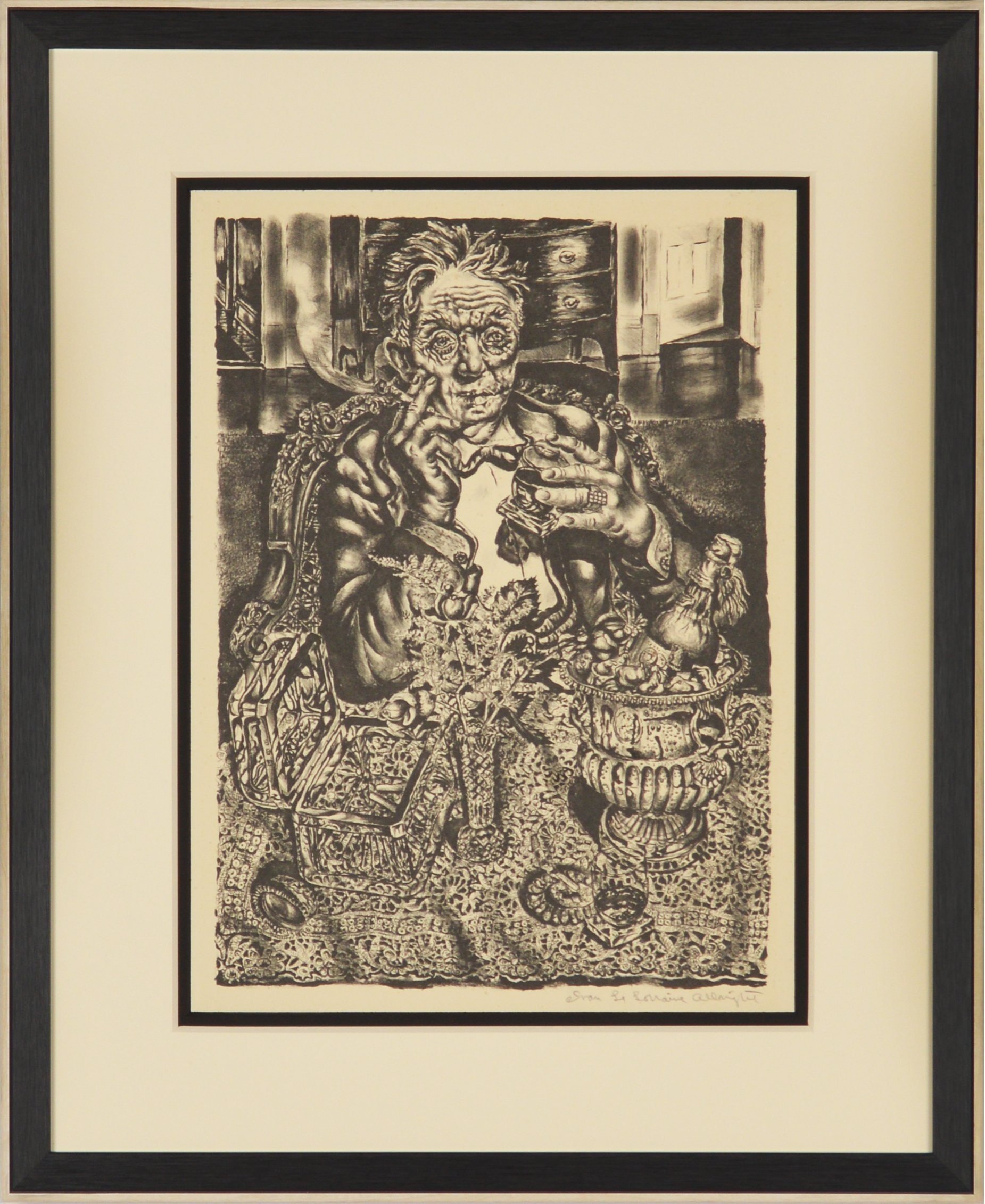Ivan Le Lorraine Albright
Ivan Le Lorraine Albright (1897-1983) was born to a well regarded Impressionist painter, but you wouldn’t likely guess that from his artistic style. Critics and scholars alike struggle to define Albright’s work, often portraits done in painstaking detail that appear to be in a state of active decay — no small part of the reason MGM selected Albright and his twin brother Malvin (or “Zsissly”) to make the Picture of Dorian Gray portraits for the 1943 film adaptation of the Oscar Wilde novel.
Albright was born just outside of Chicago where, for the first part of his life, he and Malvin were used as models for their father, Adam’s, paintings. Eventually Adam started to give the boys art lessons, bringing them on trips to the Art Institute of Chicago to learn from the masters firsthand. In 1918 Albright was enlisted as a medical illustrator for the U.S. Army working in France, rendering surgeries and wounds in ink and watercolor. Upon his return to the States, Albright decided to pursue an artistic career in earnest, studying painting at the School of the Art Institute of Chicago. After graduating, Albright and Malvin joined their father in the Methodist church in Warrenville, Illinois, he’d converted into a studio.
The 1930s saw the emergence of Albright’s signature style. He would produce highly-detailed preparatory sketches in charcoal, map out specific color palettes for different objects within the same painting (for which he mixed his own colors), and spent years, sometimes over a decade, on a single work, his process of layering with endless thin brushstrokes sometimes resulting in completing just half a square inch in an entire day. The results were dark and intricate, like crystallized oil spills. “A painting should be a piece of philosophy,” he posited. “Or why do it?”
